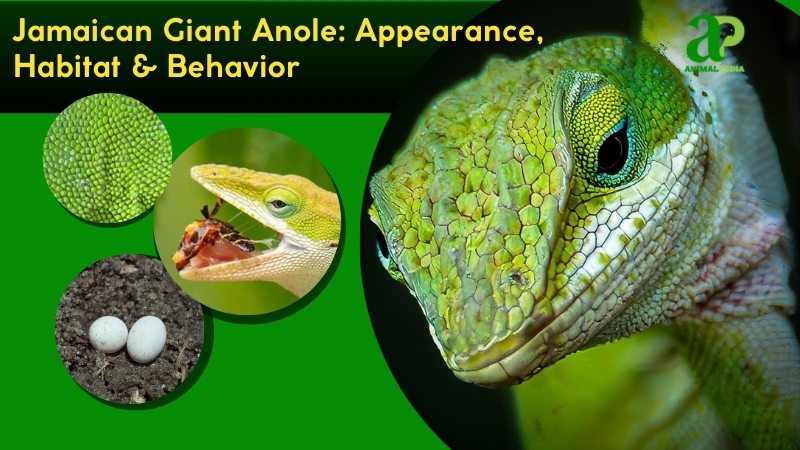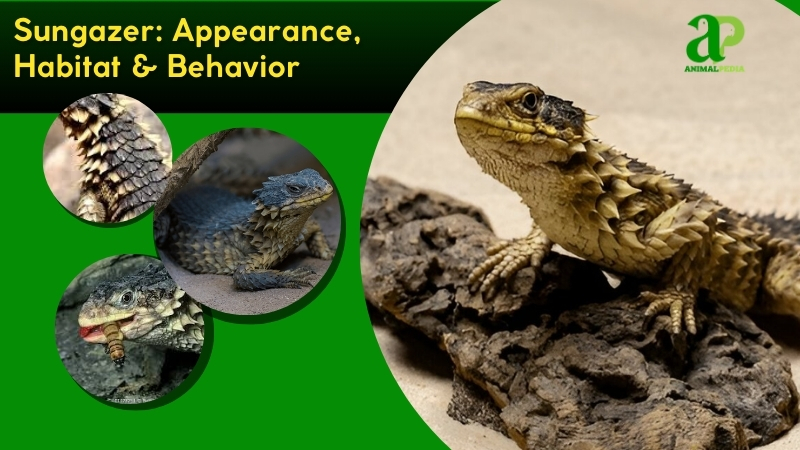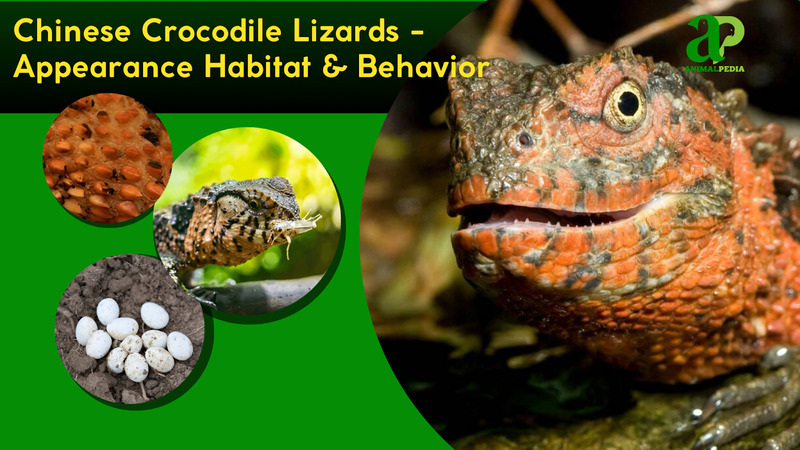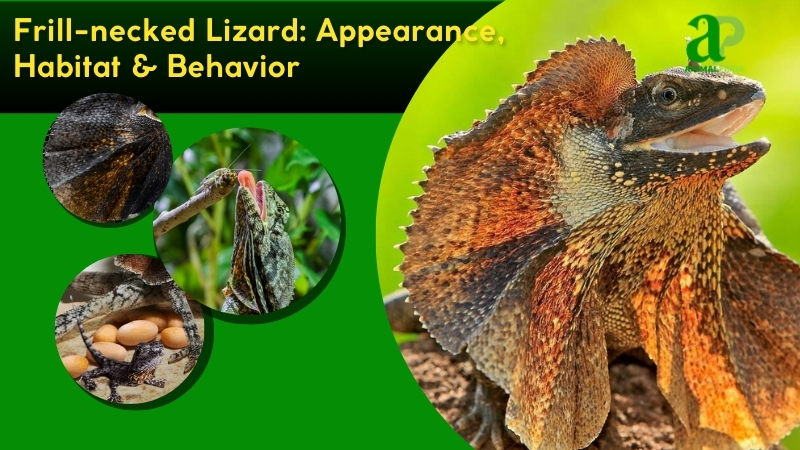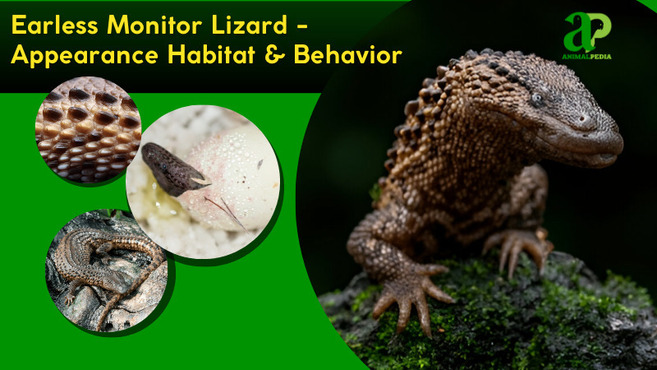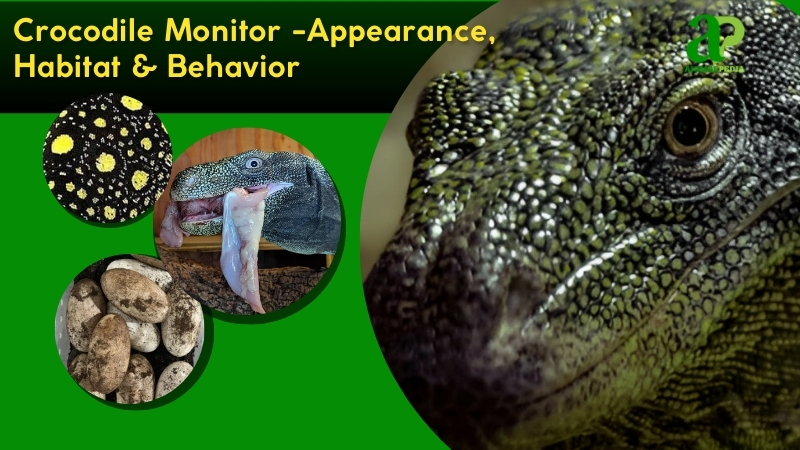The Gila Monster, scientifically known as Heloderma suspectum, earns its common name from the Gila River Basin, where it was first discovered. This iconic lizard stands out with its striking patterns of black and pink blotches on a background of orange or yellow. Adults typically measure around 20 inches in length, with some individuals reaching up to 22 inches, making them one of the largest lizard species in North America.
The behavior of Gila Monsters reflects their masterful adaptation to desert life. These solitary reptiles spend up to 95% of their time in underground burrows, emerging primarily during early morning or late afternoon hours to avoid extreme temperatures.
When hunting, they rely on their acute sense of smell, using their forked tongue to detect prey such as small mammals, birds, and eggs. Their hunting strategy is characterized by patience rather than speed—they ambush prey with a powerful bite, holding on tenaciously while venom subdues their victim. During territorial disputes or when threatened, Gila Monsters exhibit distinctive warning behaviors, including hissing, body inflation, and opening their mouths wide to display their venomous capabilities
Today, while classified as near threatened rather than endangered, Gila Monsters face challenges from habitat loss, climate change, and illegal collection for the exotic pet trade. Conservation efforts focusing on habitat preservation and public education are essential to ensuring these fascinating creatures continue to thrive in their desert home.
In this comprehensive article, we’ll delve into the fascinating world of Gila Monsters—exploring their distinctive physical features, specialized desert adaptations, complex hunting behaviors, and current conservation status. Join us as we uncover the secrets of these ancient predators that have captivated researchers and wildlife enthusiasts for generations.
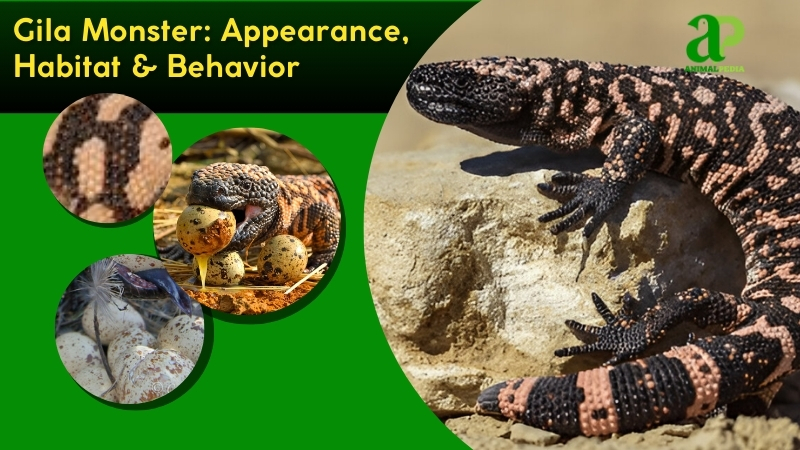
What do the Gila Monsters look like?
The Gila monster has a stout, cylindrical body that averages 20–22 inches (50–56 cm) in length. Its overall color is a striking mix of black with vivid orange, pink, or yellow bands or blotches, forming a mottled pattern that warns potential predators of its venomous nature. The skin is covered in osteoderms—bony deposits within scales—giving it a bumpy, bead-like texture, unlike the smoother scales of most lizards.
Starting with the head, it’s broad and flattened, housing small, dark eyes with keen vision and a forked tongue for chemosensory detection. The neck is thick and muscular, merging into a robust, elongated body. Its short, sturdy limbs end in sharp, curved claws, ideal for digging burrows. The tail, thick and tapering, stores fat reserves and spans about 20% of its length—roughly 4–5 inches (10–13 cm). The skin’s osteoderms distinguish it from similar species, as does its vivid coloration.
Compared to the Mexican beaded lizard, its closest relative, the Gila monster, is smaller and less uniformly patterned, with a less pronounced head crest. While both share venomous bites, the Gila’s brighter hues and chunkier build stand out against the beaded lizard’s darker, more subdued tones and slimmer frame. These differences highlight its unique adaptation to arid desert environments, in contrast to the beaded lizard’s preference for forested habitats.
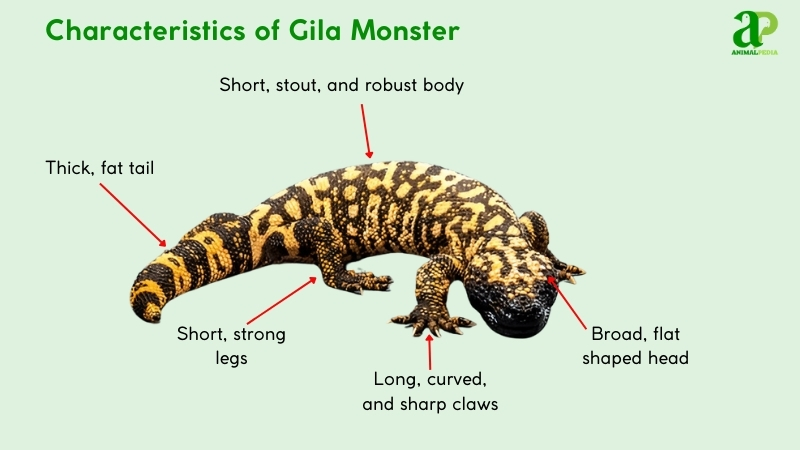
How big do Gila Monsters get?
The Gila monster has an average length of 20 inches (51 cm) and weighs about 1.5 pounds (0.7 kg) as an adult. The longest recorded specimen measured 24 inches (61 cm) and weighed 2.9 pounds (1.3 kg), discovered in Arizona’s Sonoran Desert, documented by herpetologists in a 1980s field study from the Arizona-Sonora Desert Museum.
Adult Gila monsters typically reach 18–22 inches (46–56 cm) in length from snout to tail. Males are slightly longer and heavier, averaging 20–22 inches (51–56 cm) and 1.1–2.2 pounds (0.5–1 kg), while females measure 16–20 inches (41–51 cm) and 0.8–1.8 pounds (0.4–0.8 kg). This sexual dimorphism reflects males’ larger fat reserves and robust build for territorial behavior. Below is a table of differences:
| Gender | Length Range | Weight Range |
| Male | 20–22 in (51–56 cm) | 1.1–2.2 lbs (0.5–1 kg) |
| Female | 16–20 in (41–51 cm) | 0.8–1.8 lbs (0.4–0.8 kg) |
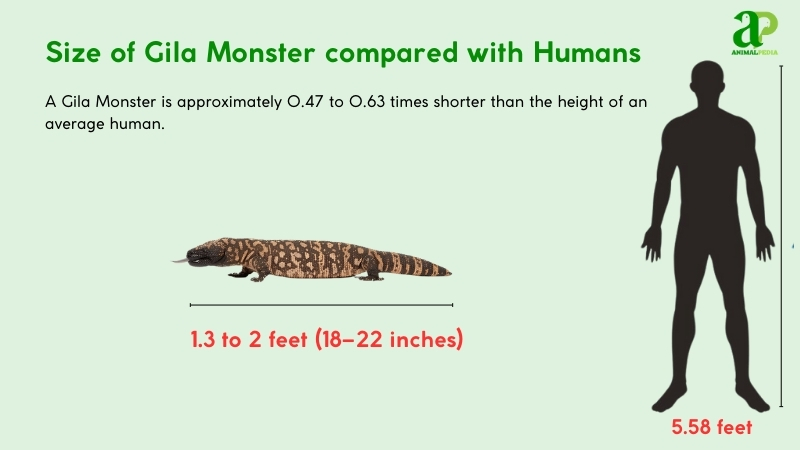
What are the unique physical characteristics of the Gila Monsters?
The Gila monster boasts a venomous bite, delivered through grooved teeth, a trait shared only with its close relative, the Mexican beaded lizard, among lizards. Unlike snakes, which inject venom via hollow fangs, the Gila monster’s venom glands in the lower jaw release neurotoxic venom that flows along tooth grooves into prey during prolonged biting. This sets it apart from non-venomous lizards like iguanas and monitors, making it a rare venomous reptilian species adapted to its desert niche.
A 2021 analysis in Toxicon detailed the venom’s composition, revealing a cocktail of proteins including gilatoxin and helothermine, which disrupt nerve function and cause intense pain. Unlike snake venom, which evolved for rapid prey immobilization, Gila monster venom likely serves dual purposes: predation and defense. Research from the University of Arizona (2023) highlights its slow-acting delivery—up to 10 minutes of chewing—unique among venomous species. This adaptation suits its ambush hunting style, targeting small mammals and eggs, and underscores its evolutionary divergence within the Helodermatidae family.
Anatomy
The Gila monster, a venomous desert lizard, has specialized physiological systems tailored to its slow-paced, arid lifestyle:
- Respiratory System: Possesses simple, sac-like lungs typical of reptiles, with air entering via nostrils and passing through a trachea to alveoli. This supports its low-energy metabolism, sufficient for its sedentary habits and brief bursts of activity during hunting.
- Circulatory System: Features a three-chambered heart (two atria, one ventricle) with partial separation, less efficient than mammals but adequate for its sluggish pace. Blood distributes oxygen and nutrients slowly, aligning with its minimal exertion and venom-reliant predation.
- Digestive System: Includes a small, muscular stomach and short intestines, optimized for infrequent, high-calorie meals like eggs and small vertebrates. Venom from lower jaw glands, rich in neurotoxins, subdues prey, aiding digestion by weakening tissues before consumption.
- Excretory System: Has paired kidneys excreting uric acid via a cloaca, conserving water in its dry habitats (e.g., Sonoran Desert). This adaptation enables it to survive on scarce water, drawing moisture from its prey.
- Nervous System: Its brain and spinal cord are supported by acute sensory organs, including a forked tongue and Jacobson’s organ, that detect scent trails from long distances. Similar sensory adaptations are found in semi-aquatic species like the Common Basilisk, which uses sharp perception and agility to navigate riverbanks and dense vegetation.
These systems enable the Gila monster’s survival as a reclusive, venomous predator, thriving in harsh, water-scarce environments through efficiency and specialization.
Explore more: Order Squamata: A Guide to Species, Life Cycles, and Adaptations
Where do Gila Monsters live?
The Gila monster is distributed across the southwestern United States and northwestern Mexico, concentrated in the Sonoran Desert (Arizona, southeastern California, southern Nevada, southwestern Utah) and parts of the Mojave Desert, with smaller populations in Sinaloa and Sonora, Mexico. These areas feature rocky foothills, desert scrub, and sandy plains.
The living environment includes arid climates with temperatures of 20–40°C (68–104°F), low rainfall (less than 10 inches/25 cm annually), and sparse vegetation such as cacti and shrubs. This suits the Gila monster’s water-conserving physiology, slow metabolism, and burrowing habits, with venom aiding predation in a prey-scarce ecosystem.
Fossil records suggest Gila monsters have inhabited these regions for over 20 million years, with no significant migration due to their sedentary nature. Research from the Arizona-Sonora Desert Museum (2020) indicates that they adapt to desert conditions, relying on fat-storing tails and uric acid excretion for survival.
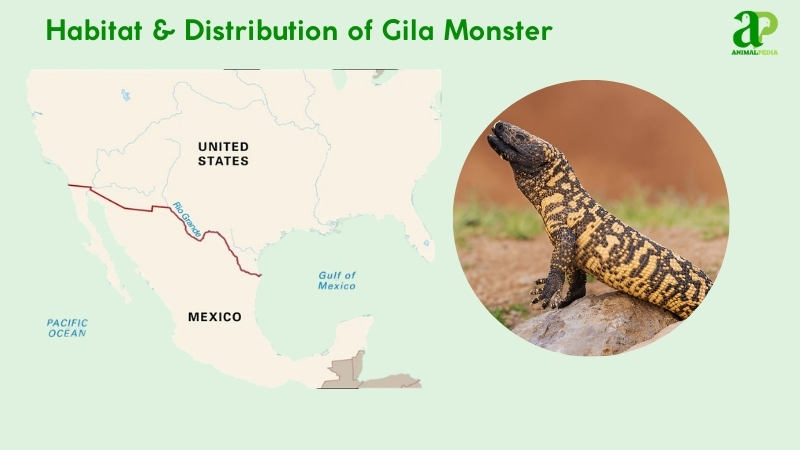
How do seasonal changes affect their behavior?
Gila monsters exhibit distinct behavioral patterns across seasons in their desert habitats, adapting to the arid extremes of the southwestern U.S. and northwestern Mexico. These shifts optimize survival in a resource-scarce environment with pronounced dry and wet periods.
Seasonal behavior varies notably. In the dry season, they are inactive for weeks, relying on fat reserves, while in the wet season, they forage more actively, eating every 1–2 weeks. Mating occurs in spring (wet season), with eggs laid in summer and hatching in the following spring. They stay near burrows year-round, with minimal range shifts.
- Dry Season (May-October)
Activity drops by 50%, with Gila monsters basking 3–5 hours daily to maintain 30–34°C body temperature in cooler, arid conditions. They ambush prey near burrows, conserving energy as water and food dwindle.
Mating begins in May, peaking in June, with females laying eggs in July–August in sandy, dry soil.
- Wet Season (November-April)
Foraging increases, with daily ranges doubling to 0.5–1 km as rains boost prey availability. Basking time is reduced to 1–2 hours due to milder temperatures (20–25°C).
Eggs incubate for 9–10 months, hatching in April–May when humidity (50–70%) and warmth support hatchlings, which dig out and feed independently.
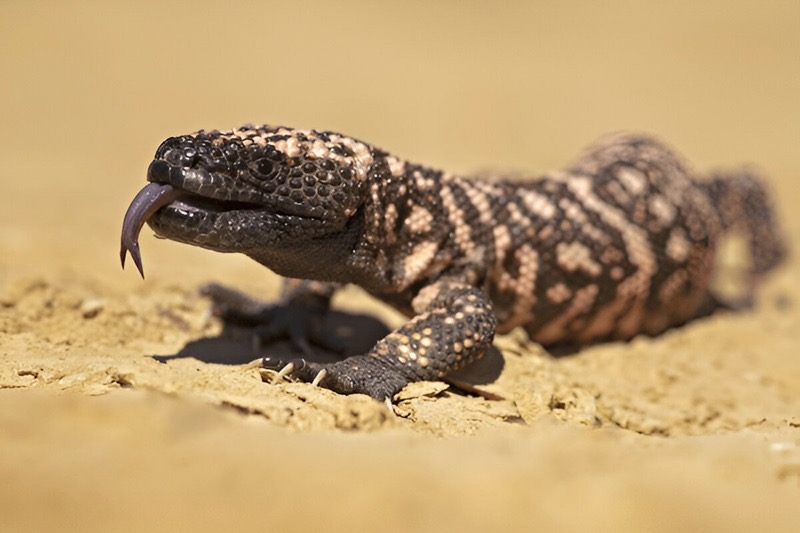
What is the behavior of the Gila Monsters?
Gila monsters are fascinating desert reptiles with unique traits that enable them to survive in harsh environments. Here’s an overview of their key behaviors and characteristics:
- Diet: Gila monsters are carnivorous and feed on small mammals, birds, reptiles, and eggs. Their diet changes as they grow, with hatchlings eating insects and adults hunting larger prey like rabbits and ground squirrels.
- Hunting Mechanisms: Using ambush tactics, Gila monsters rely on their keen sense of smell to detect prey. They strike swiftly with their powerful jaws and venomous bite, securing meals despite their slow movements.
- Venomous Nature: Gila monsters have venom delivered through grooves in their teeth. Though used mainly for defense, it helps subdue prey and protect them from threats.
Daily Activity Patterns: Active in the early morning and late afternoon, they avoid the midday heat. They are especially active during spring and fall, when temperatures are more moderate. - Locomotion Capabilities: With a distinctive side-to-side movement, Gila monsters navigate rocky desert terrain. They are not skilled swimmers and avoid water when possible.
- Social Structure: Solitary creatures, Gila monsters only interact during the breeding season, with males seeking females to mate.
- Communication: They communicate through scent trails and body language, using their unique physical behaviors to signal territory and threats.
What do Gila Monsters eat?
Gila monsters are carnivorous, primarily preying on small mammals, birds, reptiles, and eggs, with a preference for nestlings and carrion when available. Their venomous bite, delivered through grooved teeth, subdues live prey by disrupting nerve function, though they rarely target humans.
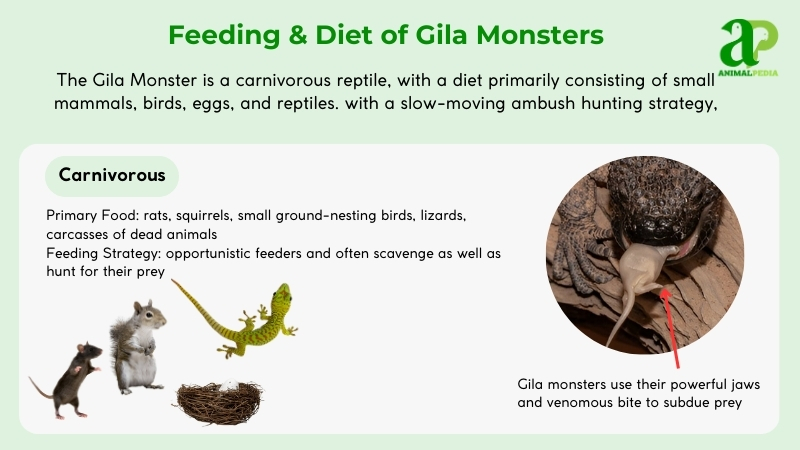
Diet by age
Gila monsters adapt their diet as they grow, reflecting their size and hunting capabilities.
- Hatchlings (0-1 Year)
Hatchlings feed on small insects—beetles, crickets—and tiny lizard eggs, providing protein for rapid growth. They forage near burrows, avoiding larger predators. - Juveniles (1-3 Years)
Juveniles target small rodents, lizards, and bird eggs, occasionally scavenging carrion. This supports their developing venom delivery and ambush skills. - Subadults (3-5 Years)
Subadults prey on larger rodents, nestlings, and reptile eggs, relying more on venom to secure meals as their jaws strengthen. - Adults (5+ Years)
Adults hunt rabbits, ground squirrels, and bird clutches, and supplement their diet with carrion. Their slow metabolism allows them to eat infrequently but consume energy-rich meals.
Diet by gender
Males and females show no notable dietary differences; they tear prey with strong jaws because they lack chewing adaptations. Larger prey is broken into manageable chunks.
Diet by seasons
Gila monsters are opportunistic feeders with stable year-round diets, though prey availability peaks in spring and summer during the breeding seasons of small vertebrates.
How do Gila Monsters hunt their prey?
Gila Monsters demonstrate their hunting skills in the desert by using patience and precision. These creatures mainly rely on ambush tactics, patiently waiting for potential prey to cross their path. With their keen sense of smell, Gila Monsters can detect animals such as rodents and birds, as well as eggs.
When the opportunity arises, they swiftly strike with their powerful jaws, injecting venom into their victim. Despite their slow movements, Gila Monsters exhibit agility when seizing their meals.
Their hunting approach combines waiting and rapid reactions. Once they capture their prey, Gila Monsters maintain a firm grip with their sharp teeth to secure their meal. This unique hunting style enables them to efficiently catch food while conserving energy in the challenging desert environment.
Observing a Gila Monster hunt offers a fascinating insight into the delicate balance of predator and prey in the natural world.
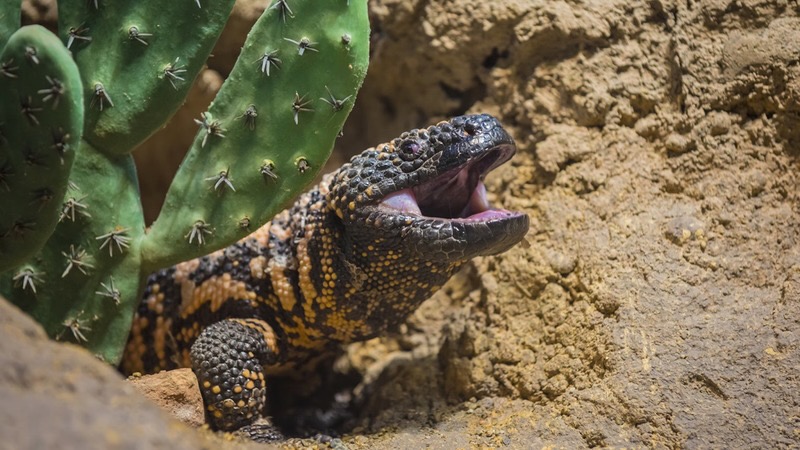
Are Gila Monsters venomous?
Gila Monsters are one of the few venomous lizards found in North America. They possess venom in glands located in their lower jaws, which is delivered through grooves in their teeth when they bite. Although their venom is primarily used for self-defense rather than hunting, it plays a crucial role in their behavior.
When threatened, Gila Monsters may bite and chew their attacker to inject venom. Despite this defense mechanism, these creatures aren’t inherently aggressive and prefer to avoid confrontation if possible. They exhibit distinctive behaviors, such as hissing, body inflation, and flicking their long, forked tongues, to signal potential threats and deter aggressive attacks rather than engage in them.
Understanding the venomous nature of Gila Monsters provides insight into their behavior patterns and how they navigate their natural habitat, showcasing a blend of unique defense mechanisms and survival strategies that make them fascinating to observe in the wild.
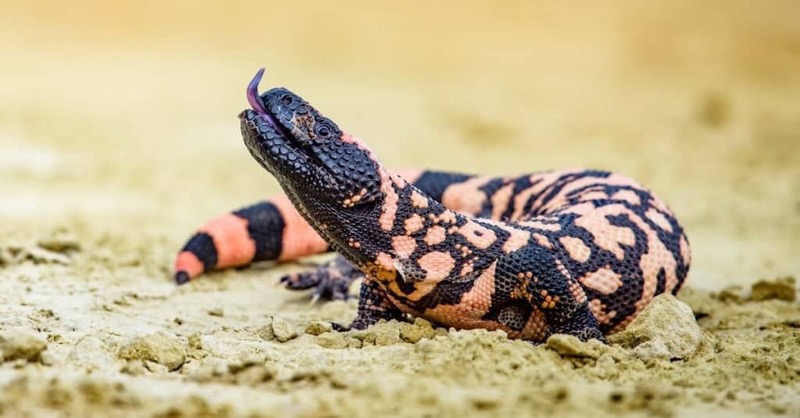
When are Gila Monsters most active during the day?
Gila Monsters are most active during the early morning and late afternoon, preferring cooler temperatures over the scorching midday heat. These times of day are when they’re often spotted foraging for their meals, which consist of eggs, small mammals, birds, and sometimes insects.
Their activity peaks in the spring and fall when the weather is more moderate, allowing them to move comfortably in search of food and potential mates. This is when you might observe their characteristic leisurely stroll as they explore the desert landscapes they call home.
However, in the hot summer months, Gila Monsters reduce their daytime activity to save energy and avoid overheating. It’s fascinating to see how these unique reptiles adjust their behavior in response to changing temperatures throughout the year.
How do Gila Monsters move on land and water?
Gila Monsters have a unique way of moving on land, using a distinctive side-to-side motion that showcases their robust build and strong legs. Unlike other lizards, they sway their bodies as they walk slowly and deliberately, making it easier for them to navigate the rocky desert terrain. Their powerful legs help them move forward with agility, despite their bulky appearance.
When it comes to water, Gila Monsters aren’t skilled swimmers and tend to avoid aquatic environments whenever possible. If they do encounter water, they may awkwardly paddle with their legs, but their bodies aren’t built for efficient movement in the water.
Their intriguing gait on land highlights their adaptation to the arid landscapes of the Southwest, making watching a Gila Monster move a fascinating experience that underscores its unique physical characteristics and desert lifestyle.
Do Gila Monsters live alone or in groups?
Gila Monsters are solitary creatures, typically living alone in the desert environment they call home. They aren’t social animals and tend to establish and defend their own territories, which can range from 1 to 3 square kilometers. These intriguing reptiles are known for their highly territorial behavior, often marking their boundaries with scent trails to communicate with other Gila Monsters in the area.
While Gila Monsters usually lead independent lives, they may gather during the breeding season. Male Gila Monsters become more active during this period as they seek out females for mating. Once the breeding season concludes, they go back to their solitary lifestyle.
In essence, Gila Monsters interact with others mainly for breeding purposes or territorial disputes. These behaviors help them survive in the challenging desert environment where resources are limited and competition is intense.
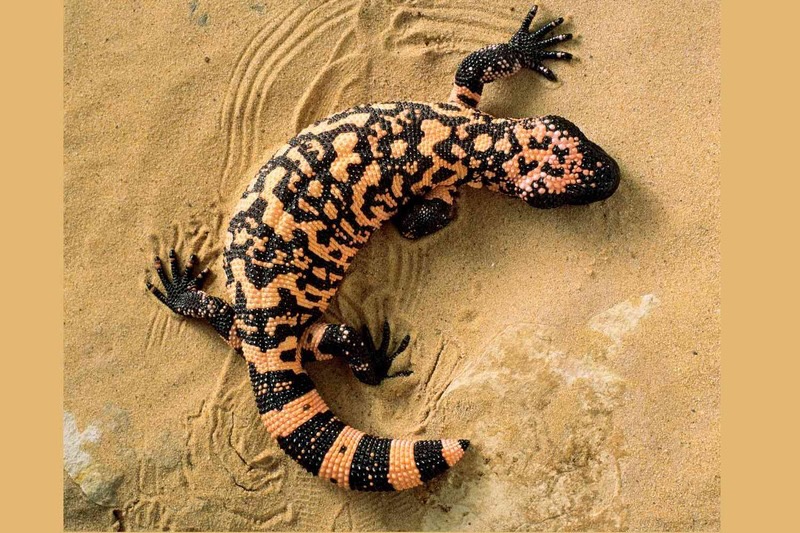
How do Gila Monsters communicate with each other?
Gila Monsters mainly communicate through scent trails to transmit messages about territory and mating. These unique creatures have specialized glands on their tail that release a distinct scent detectable by other Gila Monsters. As they move through their dwelling areas, they leave scent trails as markers and signals for potential rivals or partners.
Besides scent trails, Gila Monsters also use body language for communication. When they feel threatened or agitated, they may arch their backs, inflate their bodies, and open their mouths to reveal their venomous bite, a clear warning sign for potential threats to stay away or face the consequences.
How do Gila Monsters reproduce?
The Gila monster reproduces oviparously, laying eggs rather than giving birth to live young. Breeding season begins in late spring, typically in May, when males become territorial and engage in ritual combat—hissing and body-arching—to win mates. Females release pheromones, attracting males who flirt by tongue-flicking and nudging. Copulation lasts hours, with males gripping females using claws and jaws.
Post-mating, females lay 2–12 eggs in July or August, each averaging 1.5 – 2 ounces (42–56 grams). Eggs are buried in sandy soil or under rocks, unprotected beyond concealment, as neither parent guards them. Males resume solitary foraging; females may eat less, focusing energy on recovery. Egg-laying can be interrupted by drought or malnutrition, noted in Arizona during the 2011 drought when fewer clutches were observed.
Incubation takes 9–10 months, with eggs hatching the following spring. Hatchlings, 6 inches (15 cm) long, emerge independent, foraging on insects and small eggs immediately. They grow slowly, reaching maturity at 3–5 years, developing venom and size incrementally.
The Gila monster’s life cycle spans 20–30 years in the wild. Notably, their slow reproductive rate—breeding every 1–2 years—limits population growth, making habitat preservation critical. Studies, like those from the Arizona-Sonora Desert Museum (2020), highlight their reliance on stable desert conditions for successful reproduction.
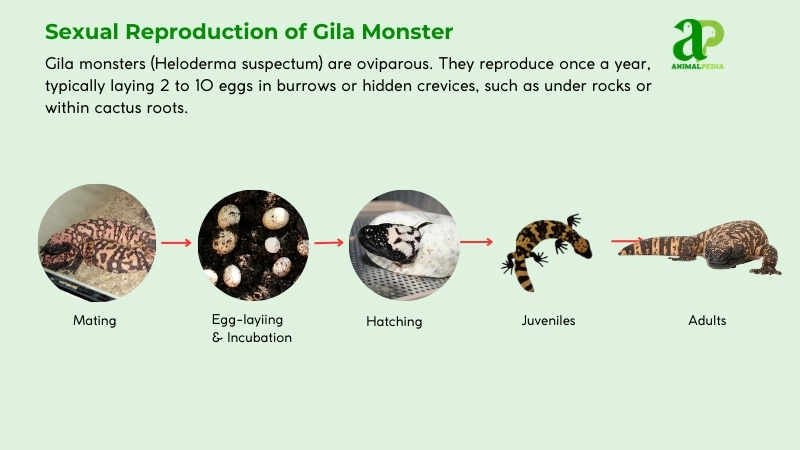
How long do Gila Monsters live?
Gila Monsters are renowned for their impressive lifespans, living up to 20 years in the wild. Their ability to thrive in the harsh desert environment contributes to their longevity compared to other lizard species. Reaching sexual maturity at 2 to 3 years old, these creatures engage in a fascinating courtship dance during the spring mating season to attract females.
After the incubation period lasts between 9 to 12 months, the young Gila Monsters hatch and begin their independent journey of survival in the challenging desert terrain.
What are the threats or predators that Gila Monsters face today?
The Gila monster faces several current threats: habitat loss, climate change, illegal pet trade, and road mortality. Predators include coyotes, hawks, and snakes, while human impacts exacerbate its Near Threatened status.
- Habitat Loss: Urban expansion in the Southwest, particularly around Tucson and Phoenix, destroys rocky foothills and desert scrub, reducing burrow availability and prey, potentially halving populations in affected areas.
- Climate Change: Rising temperatures and erratic monsoons strain its water-conserving physiology, with drought years (e.g., 2011) linked to fewer egg clutches and a 20–30% drop in juvenile survival.
- Illegal Pet Trade: Poaching for exotic pet markets depletes wild numbers, with hundreds collected annually despite legal protections, disrupting local breeding populations.
- Road Mortality: Increased traffic in Arizona and Nevada kills dozens yearly, fragmenting habitats and limiting gene flow, with impacts worsened by development sprawl.
Predators target Gila monsters in various ways: coyotes prey on adults in open areas, hawks snatch juveniles during rare surface activity, and kingsnakes consume hatchlings near nests. Their venom deters some attacks, but exposure increases with habitat disturbance.
Human impact is profound, driven by urbanization and collection. Research from the Arizona-Sonora Desert Museum (2020) shows a significant decline in sightings near developed zones, attributing it to habitat fragmentation. National Geographic (2016) highlights climate models predicting a 3–5°C temperature rise by 2100, pushing Gila monsters beyond thermal tolerances and shrinking their ranges. Legal protections under CITES and U.S. state laws mitigate trade, but enforcement lags, per IUCN assessments. Translocation efforts often fail, with relocated lizards returning or succumbing to predation, underscoring human-induced ecological stress on this iconic reptile.
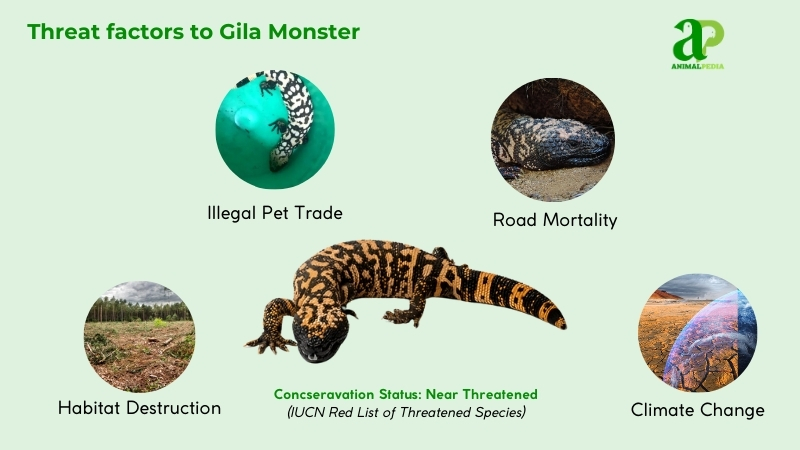
Are Gila Monsters endangered?
The Gila monster is not endangered. It is currently classified as Near Threatened (NT) by the IUCN Red List, a category indicating it is close to qualifying as Vulnerable but does not yet meet the criteria for a threatened status (IUCN, 2022). This assessment reflects concerns about population declines, though not severe enough to warrant a higher threat level.
Data on the Gila monster’s population are limited due to its secretive, nocturnal nature and subterranean habits, making accurate counts challenging. The IUCN estimates several thousand adults range-wide, with a suspected decline across its U.S. and Mexican range, though no precise total exists. In Utah, estimates suggest 450–800 individuals, per the Utah Division of Wildlife Resources, cited in the 2011 U.S. Fish and Wildlife Service petition review.
Research from the Arizona-Sonora Desert Museum (2020) notes stable but shrinking local populations, particularly near urbanizing areas like Tucson, where habitat loss drives declines. Dale DeNardo’s field studies (National Geographic, 2016) reinforce this, highlighting the difficulty of tracking density and the years required for reliable estimates in any area. The species’ slow reproductive rate and habitat specificity amplify these threats, yet current data do not support an Endangered classification. Continuous monitoring is essential to refine these figures and accurately assess trends.
What conservation efforts are underway?
Gila Monsters face threats from predators such as birds of prey, coyotes, and bobcats in their natural habitats, due to their tough skin and potent venom. Conservation efforts are crucial to protect these unique reptiles. Wildlife organizations are actively working to preserve the habitats where Gila Monsters live.
By raising awareness about the important role they play in the ecosystem, steps are being taken to reduce human impact on their environment. Poaching is another significant threat to Gila Monsters, as some people capture them unlawfully for the pet trade. Strict laws and regulations are enforced to combat this practice and ensure the safety of these animals.
Education also plays a vital role in conservation by teaching communities about the significance of maintaining the natural balance of our world. Through these combined efforts, there’s hope for a brighter future for Gila Monsters.
Frequently Asked Questions
Can Gila Monsters Be Domesticated as Pets?
No, you can’t domesticate gila monsters as pets. They are wild animals with specific habitat requirements and behaviors. It’s illegal in some places due to their protected status. Consider more suitable pets instead.
Do Gila Monsters Have Any Natural Defense Mechanisms?
Absolutely, gila monsters have natural defense mechanisms. Their venomous bite is one of the key ways they defend against threats. Remember, it’s important to respect these creatures from a safe distance.
Are There Any Myths or Legends About Gila Monsters?
Yes, there are several myths and legends about Gila monsters. These tales often portray them as creatures of mystery and power, embodying both danger and wisdom in the folklore of various cultures throughout history.
Do Gila Monsters Have a Role in Traditional Medicine or Folklore?
Yes, gila monsters have a significant role in traditional medicine and folklore. They are believed to possess healing properties in some cultures. In folklore, gila monsters are often portrayed as powerful creatures with mystical attributes.
Conclusion
The Gila Monster is a fascinating creature with vibrant skin patterns, unique adaptations, and a habitat in the desert and scrublands of the southwestern U.S. and northwestern Mexico. Their behavior, reproduction, and internal anatomy make them truly intriguing animals to learn about. Despite facing threats from predators, Gila Monsters continue to thrive in their environment. Keep exploring the world of these amazing reptiles for more interesting facts and discoveries!





